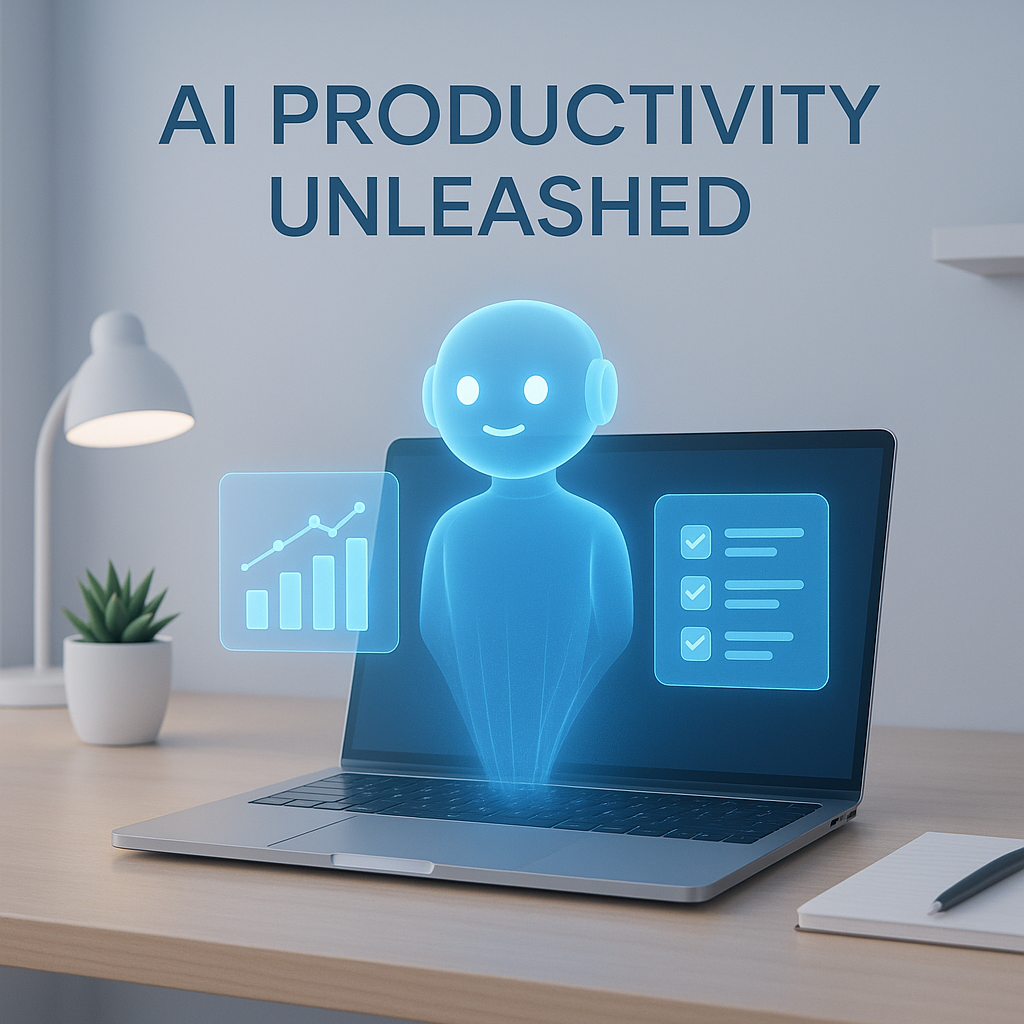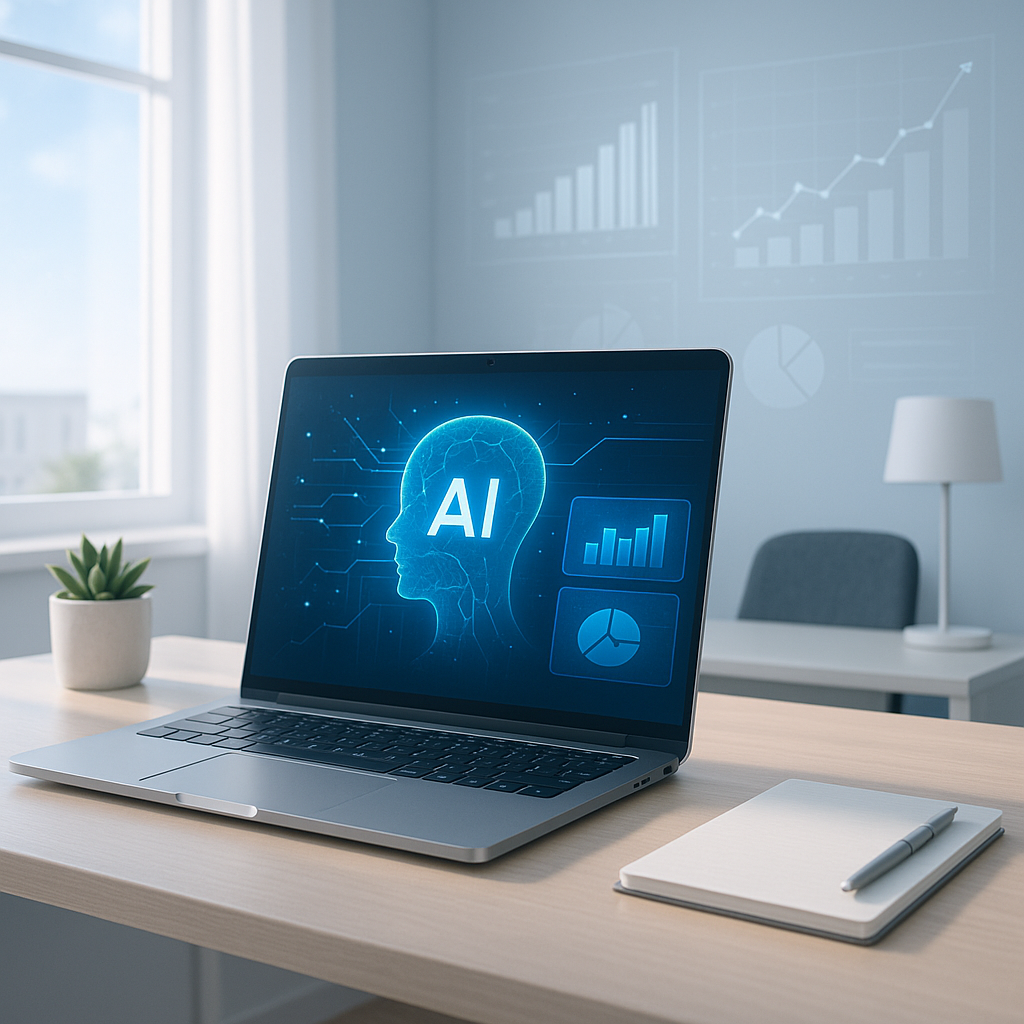# The Rise of AI Tools: Transforming the Modern Home Office Experience
How Artificial Intelligence Is Reshaping Work From Home Practices
The traditional concept of working has undergone a significant transformation in recent years. As remote work becomes increasingly normalized, AI tools have emerged as essential components of the modern Home Office setup. These technological solutions are not just optional add-ons but necessary productivity enhancers that help professionals manage their workload efficiently while maintaining a healthy work-life balance.
Understanding AI in the Work From Home Context
AI, or Artificial Intelligence, refers to computer systems designed to mimic human intelligence and perform tasks that typically require human cognition. In the Work From Home environment, AI manifests in various forms – from simple automation tools to sophisticated virtual assistants capable of managing complex workflows.
The integration of AI into home offices has accelerated dramatically, particularly since the global shift toward remote work. What was once considered futuristic technology has become accessible to everyday users, helping them streamline tasks, enhance productivity, and reduce the cognitive load associated with juggling multiple responsibilities.
Essential AI Tools for the Modern Home Office
For professionals adapting to remote work environments, several AI-powered solutions have proven invaluable:
**Intelligent Scheduling Assistants**: Applications like Clara, Calendly, and x.ai analyze email communications and automatically schedule meetings based on participant availability, eliminating the time-consuming back-and-forth typically involved in coordination.
**Smart Document Processing**: Tools such as Grammarly and Hemingway use AI to analyze writing, suggesting improvements in grammar, tone, and clarity. More advanced solutions like Jasper or Copy.ai can generate content based on simple prompts, saving hours of writing time.
**Virtual Meeting Enhancers**: AI-powered meeting tools transcribe conversations in real-time, extract action items, and even analyze participant engagement, making virtual meetings more productive and actionable.
**Task Prioritization Systems**: Applications like Todoist and ClickUp incorporate AI to help users organize tasks based on deadlines, importance, and historical work patterns, ensuring that critical work gets completed first.
**Automated Customer Support**: For small Home Office businesses, AI chatbots provide 24/7 customer service without requiring constant human monitoring.
Building an AI Business from Your Home Office
Beyond using AI tools for productivity, forward-thinking entrepreneurs are creating AI Business models that operate entirely from home offices. This emerging sector presents unique opportunities for those with technological aptitude or domain expertise.
Starting an AI Business from home requires minimal physical infrastructure but demands specific knowledge and skills. The growing demand for customized AI solutions across industries has created a market where specialized expertise can be monetized through consulting, development, or implementation services.

Several business models have proven successful in this space:
**AI Development Services**: Creating custom AI solutions for businesses lacking in-house expertise.
**Data Analysis and Insights**: Leveraging AI tools to extract actionable insights from client data.
**AI Integration Consulting**: Helping businesses implement existing AI solutions effectively.
**Industry-Specific AI Applications**: Developing specialized tools for particular sectors like healthcare, finance, or education.
**AI Training and Education**: Teaching others how to effectively utilize AI tools through online courses or coaching.
Learning AI: Accessible Education Options
The rapid evolution of AI technology has created a significant skills gap, with demand for AI expertise outpacing available talent. This presents an opportunity for Work From Home professionals looking to upskill.
Many institutions now offer a Free AI Course or training program designed to introduce beginners to fundamental concepts. These educational resources range from basic introductions to comprehensive technical training:
**Online Learning Platforms**: Coursera, Udemy, and edX offer both free and paid AI courses from leading institutions.
**Tech Company Resources**: Google’s AI Academy, Microsoft’s AI School, and IBM’s AI Engineering Professional Certificate provide specialized training.
**Open-Source Communities**: Projects like TensorFlow, PyTorch, and Hugging Face offer extensive documentation, tutorials, and community support for those learning AI implementation.
**YouTube Channels and Podcasts**: Many AI experts share knowledge through accessible free content, perfect for home-based learning.
Ethical Considerations in Home Office AI Implementation
As AI becomes increasingly integrated into Home Office workflows, users must consider ethical implications. Privacy concerns are paramount, especially when AI tools process sensitive personal or business information. Additionally, reliance on algorithmic decision-making may perpetuate biases or create dependency that undermines human judgment.
“Technology is nothing. What’s important is that you have faith in people, that they’re basically good and smart, and if you give them tools, they’ll do wonderful things with them.” – Steve Jobs
This quote highlights the importance of maintaining human oversight when implementing AI solutions. In the Home Office context, this means regularly reviewing automated outputs, understanding how AI tools make decisions, and establishing boundaries for technology use.
The Future of AI in Remote Work Environments
The trajectory of AI development suggests that future Home Office environments will feature increasingly sophisticated AI integration. Current trends point toward:
**Ambient Computing**: AI systems that operate in the background, automatically adjusting home office environments for optimal productivity based on learned preferences.
**Advanced Natural Language Processing**: More sophisticated communication tools capable of drafting complex documents, emails, and presentations with minimal human input.
**Augmented Reality Collaboration**: AI-powered virtual workspaces that create immersive collaborative environments for remote teams.
**Predictive Work Management**: Systems that anticipate work needs, preparing resources and information before they’re requested.
The evolution of these technologies will continue to transform how Work From Home professionals operate, potentially eliminating many routine tasks while creating new opportunities for creative and strategic work.
Balancing AI and Human Elements in Home Office Productivity
While AI tools offer tremendous advantages for remote workers, maintaining balance remains crucial. The most effective Home Office setups combine technological efficiency with human creativity and judgment. This hybrid approach recognizes that AI excels at processing information, identifying patterns, and executing routine tasks, while humans contribute creativity, emotional intelligence, and ethical decision-making.
As AI continues to reshape the Work From Home landscape, professionals who successfully navigate this balance will find themselves equipped to thrive in an increasingly competitive and technology-driven world.




